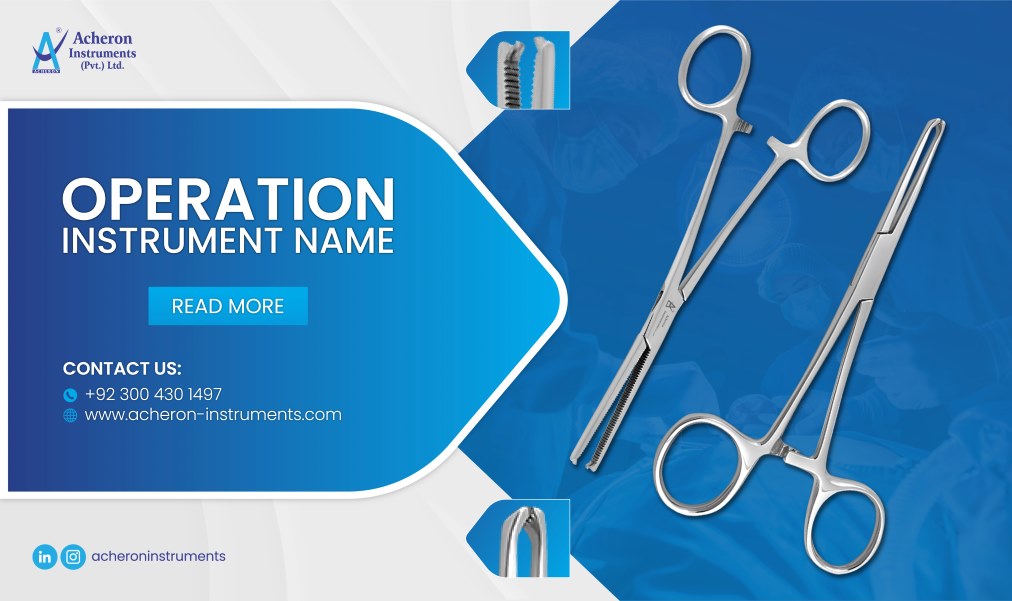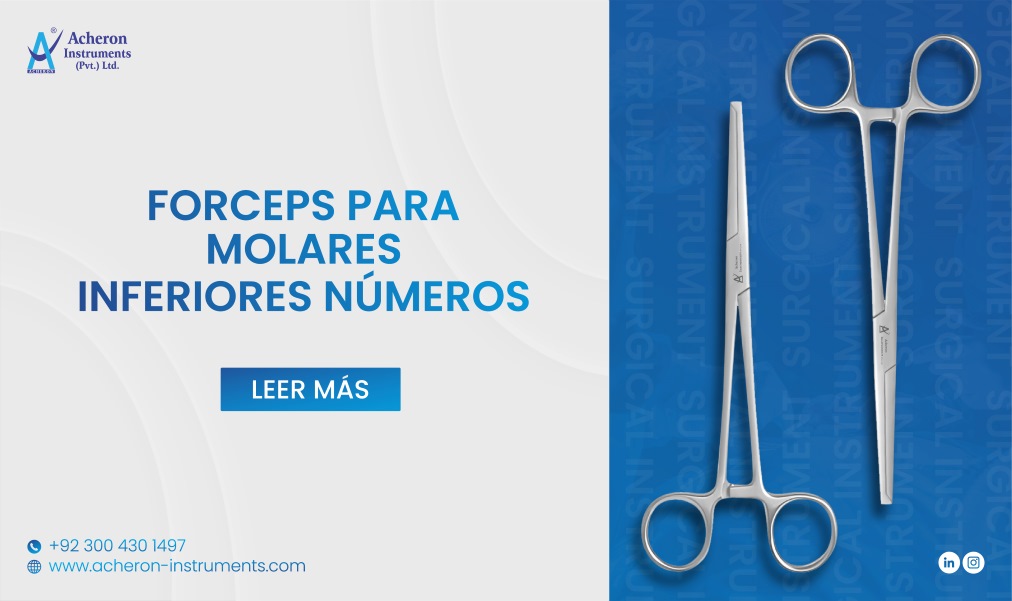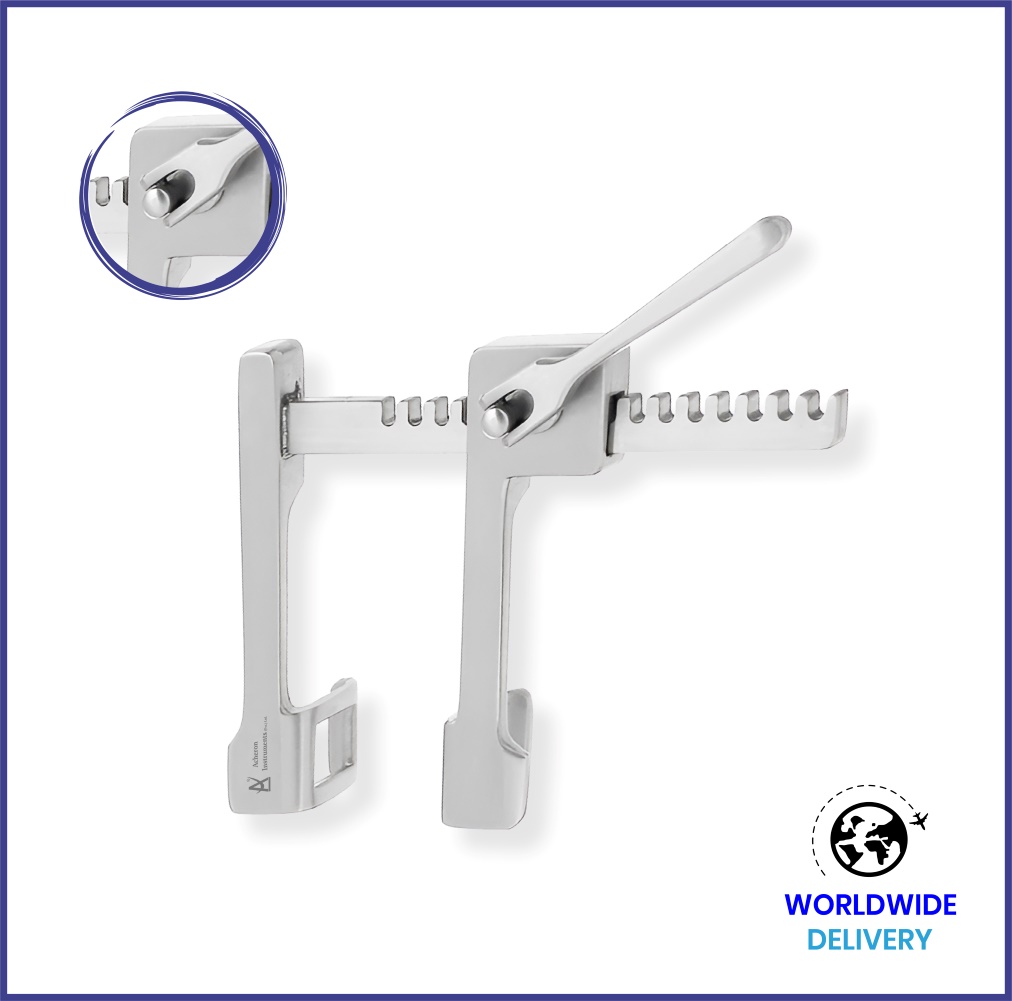Finochietto retractors are also called rib spreaders as they can be used for thoracic procedures for separating the ribs. They are made up of high-quality material to ensure better performance and increased longevity.
Design
Finochietto retractors consist of broad blades that are extended outwards and mounted on a ratcheted bar. The desired level of separating the ribs can be achieved by inserting the blades through the thoracotomy incision. It comprises circular fenestrations that ensure a firm grip preventing trauma to the adjacent tissues.
This retractor also consists of a screw lock that secures the blades for retraction at an optimal level. For having a secure grip on the tissues, the angles of the Finochietto rib spreader are generally angled.
Uses and specifications
· Finochietto retractors can hold the underlying tissues and organs as well as separate the edges of surgical wounds or incisions actively. This allows accessing the body parts present under the incision.
· This instrument is extensively used in thoracotomy procedures for gaining access to the internal organs
· It is also widely used during trauma and cardiovascular surgeries.
· The damage to inadvertent soft tissues is prevented due to the smooth edges of the instrument.
· The lightweight design of Finochietto retractors allows fatigue-free surgery, especially in longer procedures. The lightweight and ergonomic design also enable comfortable handling.
· There are multiple variations available for lateral blades of these retractors to suit various surgical needs
· The screw lock also helps in decreasing the user's fatigue and ensures optimal retraction
· The approximate length of the blade is 200mm, the blade width is around 65mm, and a blade depth of approx. 45mm.
· There are different sizes available for these retractors including small, medium, and large versions. Both straight and curved variations are available for these retractors
· These retractors are generally made up of stainless steel material which makes them lightweight and rust-free.
· The self-retaining feature of this instrument allows better access to the incision site
Parts of Finochietto retractors
A finochietto retractor is comprised of the following parts
· Linear displacement sensor
· Strain Gages
· Distance between retractor blades DB
· Distance between retractor arms at their bases (DA)
History of Finochietto retractors
The concept of a Rack-and-pinion type rib spreader was introduced in 1914 by French surgeon Theodore Truffer. The original design comprised a thumb screw to lock it in the desired place. The moderation in this design was made by a surgeon in Argentina named Enrique Finochietto in 1936.
Technical aspects
There are three technical aspects of using these retractors that must be considered by the surgeons
· For the displacement of chest wall muscles around the thoracotomy, the site should be dissected free
· There should be a minimum of muscle sectioning. In general, one-third of Latissimus Dosri muscle is cut usually in the event of poster lateral thoracotomy.
· After an intercostal cutting, the ribs can spread to a maximum of two inches, much longer than a skin incision
Material
Finochietto retractors are made with premium quality German stainless steel material that makes this instrument durable and can be reused. The lightweight material of this instrument allows optimum handling and enhances the performance of surgeons during various surgical procedures.
Wrap up
Finochietto retractors are incredible tools that have various surgical benefits. They also provide a positive effect in the operating room by reducing the risk of infection. We at Acheron instruments provide different variations of Finochietto retractors to suit multiple surgical needs. Our instruments are manufactured with high-quality materials only and that too at reasonable prices.









